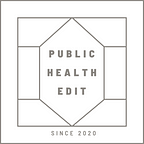These 2 Best Practices Will Reduce The Risk Of Coronavirus Crisis In Schools
While the coronavirus continues to change in form or nature, the Texas mask mandate has ended. And all businesses (including schools) are allowed to open 100%. Still, there is one thing on everyone’s mind. And that is how I can protect myself.
Yesterday, as I drove past a neighboring school, I saw crowded students. Most of the students with distance learning are now back in person. My observation was that there were no social distancing practices, but fortunately, most students had masks.
Another good news is that the Texas Education Agency’s (TEA’s) authority to decide how public schools’ operate remains in effect. Thus, despite lifting the order on masks, schools in Texas can choose their mask policy. As a result, they are protecting students, educators, staff, and the general public.
The State Health Services Department has also announced that teachers, support, and administrative are now qualified to get the covid-19 vaccines if they wish to. There is no particular method to eliminate the risk of coronavirus outbreaks. But two best practices can reduce the possibility of a coronavirus outbreak in school. But, before we address that, it is good to understand how the coronavirus attacks the human body. And what makes it so dangerous.
How the coronavirus attacks the human body
It begins with tiny drops of liquid from a cough, sneeze, or breath of an infected person. These drops may be in the air or on a surface touched before people touch their eyes, nose, or mouth. That allows the virus to pass into the thin and soft tissue that lines our throat. The coronavirus attacks the human body by going into healthy cells. In the body, the viruses multiply and attach healthy cells, especially those in the lungs. Finally, it kills particular healthy cells. In 2 to 14 days, the body reacts by showing signs of illness.
Video: How the coronavirus attacks your body
What makes the Coronavirus so dangerous?
Various types of coronavirus exist, and one of them causes COVID-19. But it is not the deadliest virus globally, with a case fatality ratio of 1.8% in the United States. The Ebola virus kills half the persons it infects. The virus that leads to severe acute respiratory syndrome (SARS) and the Middle East respiratory syndrome (MERS) kills a tenth and between 30–40% of those infected, respectively.
There are various types of Coronaviruses, and one of them causes COVID-19. However, it is not the deadliest virus in the world. While COVID-19 kills 1.8% of the infected people, the Ebola virus kills 50%. The virus that causes SARS (severe acute respiratory syndrome) kills 10% of its victims, whereas MERS (Middle East respiratory syndrome) kills between 30% and 40% of infected people.
Among the viruses known to infect humans, the reason the coronavirus that causes COVID-19 is so dangerous is that no one is immune to these viruses. Also, it spreads rapidly between individuals and attacks the upper respiratory system. Now that we understand more about the coronavirus, the two practices that can reduce the risk of outbreaks in schools are:
PREVENTION practices to lower the risk of a coronavirus outbreak.
These keep the virus out of schools.
- Period of stay at home for close contacts of persons who obtained a positive result should be inline with the CDC recommendations
- Students, educators, and staff should accurately complete screening Questions for COVID-19 before arriving at school.
- People confirmed or suspected of coronavirus infection should stay at home throughout the infection period.
- All persons must be educated on and be vigilant on the possible symptoms of the disease. Possible signs of a coronavirus infection include:
- Feeling of fever, or a temperature higher than or equal to 100.0 degrees Fahrenheit.
- Lack of taste or smell
- Cough
- Trouble breathing
- Shortness of breath
- Tiredness
- Headache
- Colds
- A sore throat
- Stuffy or a runny nose
- Shaking or exaggerated
- Shivering
- Severe muscle ache or pain
- Runny stool
- Vomiting or a feeling of nausea
MITIGATION practices to lower the risk of a coronavirus outbreak.
These reduce the likely spread of the coronavirus inside the schools.
- General health and hygiene habits
- Wearing masks
- Encouraging students to practice social distancing when possible
- If students must gather, they should gather outside, rather than inside, because of the likely reduced risk of virus spread outdoors.
- Continued use hand sanitizer upon boarding the bus and before entering school buildings
- Windows should be left open to allow outside air to circulate
- Continued cleaning practice on high touch surfaces
In my opinion, outbreaks are not bad, contrary to what our history says about them. I think they can be fertile ground to learn and build a more resilient community. Only by working to shield our community members and the environment from the coronavirus can we be protected.
I hope this helps you understand the coronavirus better and what it takes to protect yourself. Some of the references that helped me write this article include:
Note: I take the knowledge and difficult words from these materials and make them easy for you to understand
If you liked this post, please share it with your colleagues, friends, or family. Please also comment on the comments section below 👇. To stay updated, subscribe, follow us on Facebook, Instagram, Twitter, and Pinterest.
Originally published at https://publichealthedit.com on March 15, 2021.
